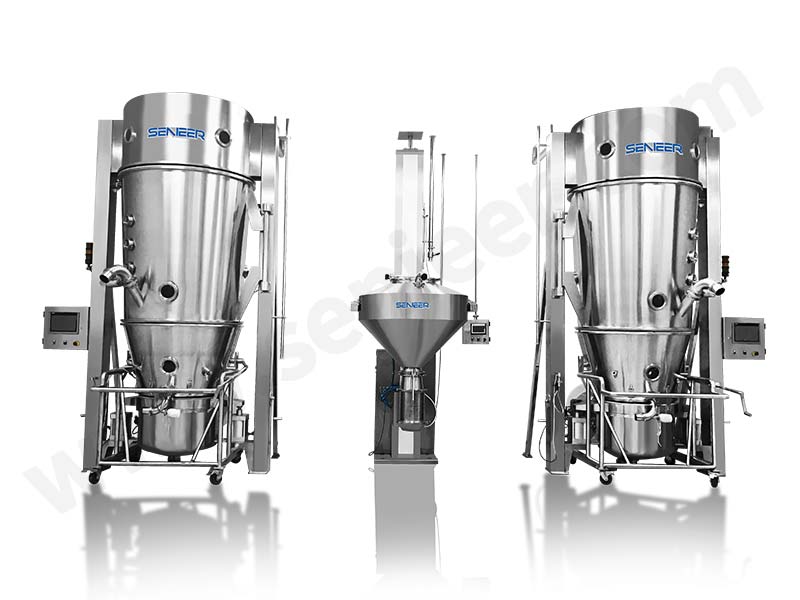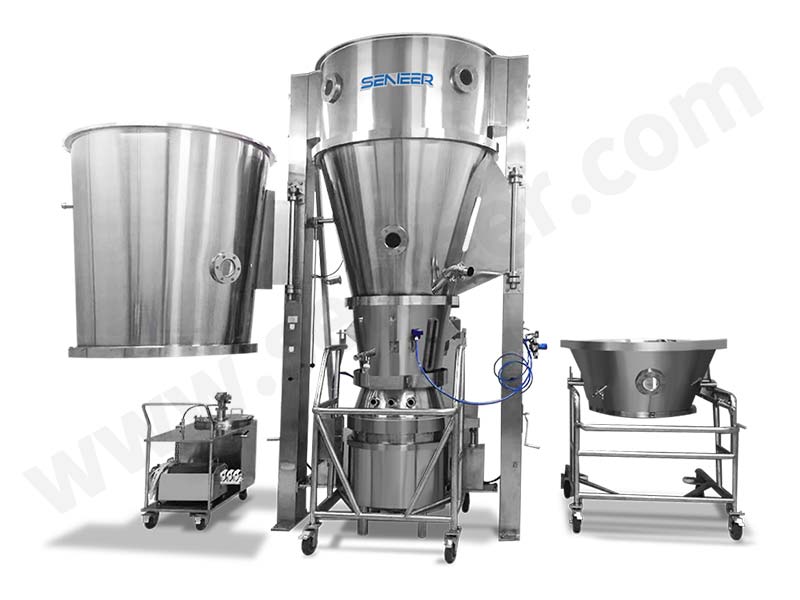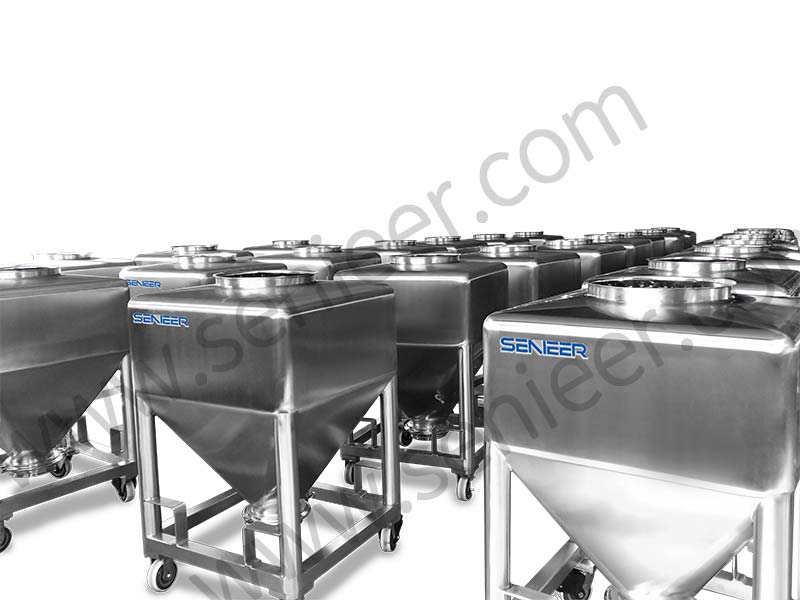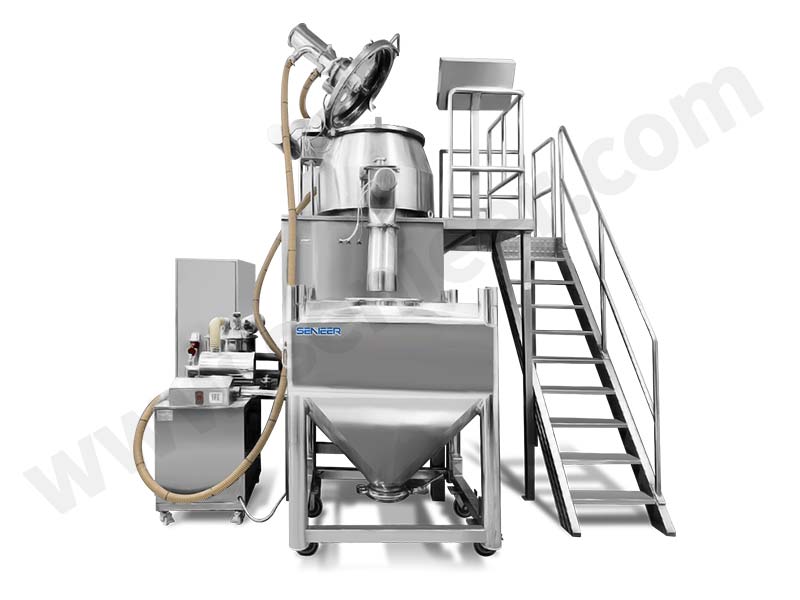There are many theories and methods of modern equipment management, and the ABC classification management method is an effective scientific management method. In the production equipment management of Suzhou Luoli Technology Co., Ltd., the secondary ABC analysis method was successfully used to classify and manage all the production equipment of the enterprise. Reduce the equipment failure rate and reduce the production cost of the enterprise. Improve the competitiveness of enterprises.
1 Fundamentals

ABC analysis, also known as primary and secondary factor analysis, is transformed from the Pareto curve. It classifies intricate economic phenomena according to the relationship between the “key minority and the secondary majority” between things, and finds the most critical minority (class A) and the secondary majority (class B and C) from it, so as to focus the main energy on the key minority. In order to achieve the effect of doubling the results with half the effort. The application of the ABC analysis method to equipment management is to classify and queue a wide variety of equipment according to certain standards, and then use different management methods for different types of equipment, and organically combine key management and daily theory.
The traditional ABC analysis method is the use of mathematical statistics methods for a wide variety of things. According to the proportion or cumulative proportion of influencing factors or attributes of things, statistics, arrangements and classifications are carried out, and they are divided into A and B. Part C. Different management methods are used. This evaluation standard is too simple to effectively reflect the importance of various equipment to the production of enterprises. In fact. Industrial enterprises have a wide variety of production equipment, the price difference is very large, the same kind of equipment also has a variety of functions, due to people’s different perspectives of observing equipment, the understanding of the importance of equipment may also be quite different. When conducting a secondary ABC analysis of production equipment, multiple evaluation criteria are set first, and each type of equipment is evaluated item by item according to these standards, and the single standard evaluation results of the equipment are determined, that is, the first ABC analysis is carried out. Different weights are set by each evaluation criterion. Convert the results of the first evaluation (i.e. A.B.C) into different scores. A comprehensive evaluation score for each device can be calculated. This is used to determine the categories of various devices, i.e. to perform a second ABC analysis. By setting different evaluation criteria and weights. Secondary ABC analysis can be performed on all production equipment of the enterprise. Identify those “critical minorities” and “secondary majorities” and manage them in different ways.
2 Implementation Process
1) Determine Evaluation Criteria
Suzhou Luoli Technology Co., Ltd. has a total of 1215 sets of production equipment, and the value of equipment ranges from several thousand yuan to several million yuan. There are their own design and processing custom-made, and there are also foreign imports. Due to the variety of products produced. Small batch size. Most devices are miniaturized. The structure is relatively simple, but it is indispensable. Depending on the characteristics of the equipment, at the time of the first ABC evaluation. Six evaluation criteria were identified:
① The Original Value Of The Equipment:
Those with an amount of more than 500,000 yuan are rated as A: those with an amount of more than 100,000 yuan and less than 500,000 yuan are rated as B: those with an amount of less than 100,000 yuan are rated as C.
② The Production Importance Of The Equipment:
Has a direct impact on production. Equipment with a key role is rated A; Has a direct impact, the role is generally rated as B; Auxiliary production equipment rated C.
③ Equipment Utilization Rate:
Equipment usage of more than 75% is rated as A: 50% or more 75% is rated as B: 50% or less is rated as C.
④ Safety And Environmental Protection Of The Equipment:
Rated A for serious impact on operational safety and the environment; Rated B for those that have a greater impact on operational safety and the environment; Rated C for those with no apparent impact.
⑤ The Serviceability Of The Equipment:
There is no professional maintenance force and maintenance means in the factory, and the maintenance is very difficult to evaluate as A: the factory has professional maintenance strength and means to be rated as B; Ordinary technicians can handle the rating of C.
⑥ Spare Parts Supply Status Of The Equipment:
The supply of accessories is not smooth, and the purchase difficulty is rated as A; Basically able to meet the production of the monopoly supply of professional suppliers rated B; Can meet the production. I can make ordinary purchases or custom-made items as C.
Take SMT production line equipment as an example, usually including plate feeder, printing machine, placement machine, resoldering furnace. Transmission tracks, ICT, AOI, feeders, ion fans and other equipment, various equipment according to the above six criteria evaluation results are shown in the table. Note: The device names in the table represent the type of device and do not reflect the number of such devices.

2) Determine The Weights Of Each Standard
The comprehensive evaluation score of the computing device was performed after the first ABC analysis. It is necessary to determine the weight of each evaluation item according to the nature of the enterprise and the characteristics of the production line, such as the weight of the evaluation criteria of the SMT production line equipment is as follows: the original value of the equipment is 0.3; The production importance of the equipment is 0.2; Equipment usage was 0.2; The failure consequence of the equipment is 0.1; The serviceability of the equipment is 0.1; The availability of spare parts for the equipment is 0.1.
The results of the first evaluation are converted into a certain score according to the unified standard, such as A is calculated 10 points, B is 5 points, C is calculated 1 point, and then the evaluation scores of the equipment are multiplied by the corresponding weights, and the comprehensive evaluation score of the equipment can be obtained after the sum.
3) Determine The ABC Classification Criteria And Divide The Categories Of Various Devices
After calculating the comprehensive evaluation score of the equipment, the ABC classification standard is determined according to the characteristics of the production line. It is possible to divide the categories of various devices. The ABC classification standard for SMT production line equipment is: When the comprehensive evaluation score is above 7 5 points, it is a Class A equipment; A comprehensive assessment score between 4.0 and 7.5 is a Class B device; a comprehensive assessment score of less than 40 is a Class C device. The evaluation results of various equipment in the SMT production line are shown in the table.
All devices can be classified by performing a secondary ABC analysis of all the equipment of the enterprise. In Suzhou Luoli Technology Co., Ltd., there are 101 A-class equipment divided by secondary ABC analysis. It accounts for 8.31% of the total number of equipment in the company; there are 493 Class B equipment, accounting for 40.58% of the total number of equipment in the company; and there are 621 Class C equipment, accounting for 51.11% of the total number of equipment in the company.
4) Classification Management
After secondary ABC classification of all devices. Different types of devices need to be managed differently. Implement comprehensive comprehensive management of Class A equipment and regional management of Class B equipment. Implement daily management of Class C equipment.
Class A Equipment Is Fully Integrated.
Preventive maintenance and predictive maintenance are combined. Implement daily maintenance, regular maintenance and annual maintenance. Use computer-aided management to perform fault analysis and comprehensive efficiency analysis of each device. Establish equipment history and report major failures. Implement failure analysis and spare parts loss analysis and establish safety stock. Train professional maintenance engineers, and engineering 9if is responsible for maintenance management. Monitoring of the process. Implement predictive maintenance to ensure that the machine is in a reliable state.
Class B Devices Are Zone-Managed.

Regional management is to take the region as the scope, list all the equipment to be controlled within the scope into a device list, and check, record and manage according to the established requirements with reference to the equipment list. Category B equipment is maintained preventively by region. Daily maintenance and regular maintenance are implemented. Establish equipment history, report major failures, implement fault analysis and establish safety stocks of key spare parts. Train technicians, who are responsible for the combination of maintenance management and engineer technical support.
Class C Equipment Is Managed On A Daily Basis.
Perform routine maintenance. Realize that the equipment operated by the operators themselves is responsible for maintenance, and the technicians support and supervise the implementation. Fix problems as they arise to reduce maintenance costs.
3 Benefit Analysis
ABC classification management is to reduce the input of equipment management. Enable equipment to create more value and achieve better economic benefits. In 2005, the secondary ABC analysis method was adopted. Suzhou Luoli Technology Co., Ltd. implements classified management for all equipment of the company. Let all employees participate in equipment management, even if all production equipment is maintained and controlled. It also enables key equipment to be managed in a key manner, improves the efficiency of equipment management, and achieves good economic results.
First of all, the classification management of equipment through secondary ABC analysis can reduce management costs. Before ABC Classification Management. Due to the full implementation of regional management. Each production equipment uses a daily maintenance checklist, so that the production line form is many, the filling work is large, and it is easy to lose, and the archiving and preservation of the form is also difficult. After ABC classification management. Comprehensive and integrated management of Category A. Regional management and daily management are implemented for Bc-class devices. In the management, only separate daily maintenance inspections are carried out for Class A equipment. This reduces form management effort and paper consumption. As can be seen from the percentage of ABC-like devices, the form management workload and paper consumption have been reduced by 90%.
Secondly, the equipment is classified and managed by secondary ABC analysis. It can reduce the equipment failure rate and improve management efficiency. After the ABC classification management, due to the implementation of a comprehensive comprehensive management of class A equipment, the class A equipment has a special engineer responsible, strengthen equipment research, implement a maintenance reporting system for major failures, continuously accumulate experience, and implement annual inspection of class A equipment, which greatly reduces the equipment failure rate, and the failure rate drops from 3.5% before to 1.6% after that. At the same time, the preventive maintenance of the equipment is strengthened. The loss of spare parts was reduced, and the proportion of spare parts loss decreased from 0.14% before to 0.10% after that, saving 340,000 yuan in 2005.
Furthermore. The secondary ABC analysis method is simple to operate, and the results of the two analysis and evaluation can adapt to the needs of managers at different levels. The application of secondary ABC analysis method to implement classified management of equipment can enable employees to enhance their awareness of equipment management and everyone to participate in the evaluation and management of equipment. Better play the role of full management.

4 Implementation Recommendations
First of all, the evaluation criteria and ABC classification criteria in the secondary ABC analysis should be determined according to the actual situation of the enterprise. Production technology is constantly evolving, and production equipment is more sophisticated and complex. More and more types of equipment. Equipment configuration for each company. Process requirements and production environment are different, managers need to set evaluation standards and weights according to the equipment status of the enterprise, can not be completely copied. Different departments or production lines of the same enterprise can also adopt different evaluation criteria and ABC classification standards.
Second, the ABC classification management method needs to be combined with other modern management techniques. Modern management technology is increasingly improved, and management methods are cross-applied, such as the application of TPM.FMEA in enterprises. The application of SPC, the research of equipment MTBF and OEE. We need to implement preventive maintenance as much as possible, improve equipment, eliminate equipment failures in the bud, improve the stability of equipment, and improve the comprehensive utilization rate of equipment.
Finally, use computers for assisted management. Equipment management is an input work, which needs to be measured from the aspects of time, quality, cost and other aspects. The complexity of the equipment itself, the technical characteristics and service life of each component are different, the adjustment status and the use of different environments will also affect the performance of the equipment, the need for a dynamic tracking analysis of the equipment, in order to prescribe the right medicine and reduce the failure of the equipment. The use of computers for auxiliary management will make it easy to collect information and statistical analysis of device management.










